You’ve likely heard the phrase “there’s no such thing as bad publicity,” but in today’s fast-paced media landscape, controlling your brand’s narrative has never been more critical. Strong media relations can make that happen. They’re vital to ensure your message is conveyed accurately and positively, enhancing your brand’s reputation. So, why are these relationships so important? What benefits do they offer, and how can you nurture them? Let’s explore further, shall we?
The Importance of Media Relations
Understanding the significance of media relations is essential for your brand.
It’s not just about getting your name out there, but also about earning credibility and shaping public perception.
Let’s discuss how a strong media relations strategy can directly impact these areas.
Enhancing Credibility through Earned Media
When you leverage media relations effectively, earned media coverage can significantly bolster your organization’s credibility and trustworthiness, setting it apart from the crowd of paid advertisements. By building a strong brand presence through media exposure, you can enhance your reputation in the industry.
- Building Brand: Earned media helps in building your brand by providing unbiased third-party validation. This builds consumer trust as media outlets are seen as neutral and credible sources of information.
- Earned Media: Unlike paid media, earned media isn’t directly controlled by you. It includes features, interviews, or any other form of publicity you get without paying for it. This lends an air of authenticity and objectivity to the content, increasing its credibility.
- Media Exposure: Consistent media exposure through news stories, articles, and features about your organization keeps you in the public eye. This regular visibility reinforces your brand image and increases the likelihood of your brand being chosen over competitors.
Impact on Public Perception
Effective media relations strategies can significantly sway public perception, emphasizing the importance of maintaining a positive image in the media. Strong media relations help shape public opinion about your company, affecting how your brand is perceived. Positive media relations ensure favorable coverage, creating an image of your brand that’s trustworthy and reliable.
Building and maintaining relationships with media outlets is a key component of this. By establishing these connections, you’re better positioned to control the narrative around your brand. This doesn’t just mean handling bad press effectively, it also involves proactively promoting positive stories that show your company in the best light.
Moreover, these relationships can provide a platform for your brand’s voice to be heard. By having strong media relations, you ensure your brand’s message reaches the public in the most effective way possible. This not only enhances your brand’s visibility but also its credibility.
In a world where perception can be reality, the role of media relations in shaping public opinion can’t be overstated. So, invest in building those media relationships – your brand’s reputation depends on it.
Building Effective Media Relations Strategies
In your quest to leverage media relations, it’s crucial to build effective strategies.
The first step? Developing a solid media relations plan that aligns with your organizational goals.
Developing a Media Relations Plan
Crafting a strategic media relations plan is a critical step in enhancing your brand’s visibility and credibility. It begins with setting clear objectives and identifying your key media targets. It’s essential to define what you hope to achieve through your media interactions. These objectives could be increasing brand recognition, promoting a new product, or managing your brand’s reputation.
Identifying your key media targets is the next step. You need to understand which media outlets your audience trusts and consumes regularly. These could range from industry-specific publications to mainstream media outlets.
Once you’ve clarified your objectives and identified your media targets, it’s time to develop your strategy.
Here’s a simple three-step process to get you started:
- Message Development: Craft clear, compelling messages that align with your brand and resonate with your audience and the media.
- Media Outreach: Establish relationships with journalists, bloggers, and influencers in your target media outlets.
- Measurement: Track your progress and adjust your strategy based on the results and feedback you receive.
Tactics for Engaging with the Media
To catch the attention of the media and build effective relations, you need to master several key tactics, such as crafting compelling press releases, creating informative media kits, and personalizing your pitches.
A well-crafted press release is often the first step in your media relations program, serving as a concise, compelling story that captures the media’s attention.
Your media kits should be comprehensive and informative, providing all the necessary information about your brand, including press releases, company background, high-resolution images, and factsheets. This helps the media understand your brand better, promoting more accurate and positive coverage.
Personalized pitches are also essential. Instead of a one-size-fits-all approach, tailor your pitches to fit the interests and style of the respective journalists or media outlets. Research their past work, understand their audience, and make your pitch relevant and engaging for them.
Lastly, remember that building effective media relations is a two-way street. Be responsive to media inquiries, provide journalists with timely and accurate information, and always follow up. This not only helps you garner more media coverage but also builds long-term, mutually beneficial relationships with the media.
Benefits of Media Relations
You’ll find that media relations can offer an array of benefits to your business. From boosting your brand’s visibility to managing crises effectively, media relations play a crucial role.
Let’s explore how these advantages can directly lead to your business’s success.
Business Growth and Opportunities
Leveraging media relations can propel your business growth by amplifying your brand’s exposure and recognition. By aligning with trusted media outlets, you can increase your brand awareness significantly. This enhanced visibility makes your brand more recognizable to potential customers, thereby expanding your market reach.
Boost Your SEO Rankings: Media relations can greatly improve your search engine optimization (SEO) rankings. When reputable media outlets link back to your site, it signals to search engines that your content is trustworthy and relevant, helping your site rank higher in search results.
Generate Positive Media: Proactively engaging with the media helps generate positive coverage. This not only bolsters your brand’s image but also builds credibility with your audience.
Open New Opportunities: Media relations can open up new business opportunities. Positive media exposure can attract potential investors, partners, and high-caliber talent to your company.
Crisis Management and Support
When the storm of a crisis hits, a robust media relations strategy can serve as your company’s lifeline, mitigating negative publicity and helping navigate through rough waters. Crisis management becomes infinitely more manageable with an established media connection. This vital link allows you to control the narrative and communicate directly with your audience, maintaining trust and integrity even in challenging times.
With a well-established media connection, you can quickly dispel rumors, counter misinformation, and provide timely, accurate updates. This proactive approach will help you maintain control over your brand’s image, reducing the risk of long-lasting damage from negative publicity. Remember, in a crisis, silence or miscommunication can be just as harmful as the crisis itself.
Furthermore, media relations support your company’s recovery post-crisis. By maintaining open lines of communication, you can shape the narrative of your comeback story, showcasing your brand’s resilience and commitment to your stakeholders.
In essence, effective crisis management through strategic media relations not only helps weather the storm but also sets the stage for a stronger, more resilient future.
Implementing Media Relations Tactics
Now, let’s talk about how to put your media relations strategies into action.
You’ll need the right tools and resources for effective media engagement.
Also, understanding and applying best practices for media communication is crucial for your success.
Tools and Resources for Media Engagement
To effectively implement media relations tactics, you need to familiarize yourself with various tools and resources that can boost your media engagement, such as digital platforms and media monitoring tools.
Digital platforms, like social media and blogs, are essential for creating and distributing content that attracts media attention. They’re also useful for engaging directly with journalists and influencers, giving you the chance to build relationships and pitch your stories.
Media monitoring tools are vital for tracking your brand’s media coverage. They allow you to measure the effectiveness of your media relations tactics, providing insights that can help you refine your strategy.
Three key tools you should consider include:
- Social Media Platforms: LinkedIn, Twitter, or Instagram can help you connect with media professionals and influencers in your industry.
- Content Distribution Platforms: Tools like PR Newswire can distribute your press releases to a wide network of media outlets.
- Media Monitoring Software: Tools like Meltwater or Mention can track your media coverage, helping you monitor the success of your media engagement efforts.
Best Practices for Media Communication
Nailing media communication hinges on mastering a few key principles: transparency, consistency, and ethical considerations. Building strong media relationships is an integral part of these best practices. You should strive to be honest and transparent in your dealings with journalists. They appreciate straightforwardness and will respect you for it. Remember, trust is the foundation of any enduring relationship.
When working with journalists, consistency is key. Ensure your message aligns with your brand’s values, and keep your communication style consistent. This will make you a reliable source for journalists, and they’ll be more likely to reach out to you for future stories.
Ethical considerations should never be overlooked. Always respect journalists’ time and never push them to publish a story that isn’t newsworthy. This isn’t only ethical but will also foster a positive professional relationship.
Challenges and Solutions in Media Relations
You’re likely to face hurdles as you navigate the world of media relations. Dealing with these common challenges requires a keen sense of adaptability and strategic thinking.
Let’s discuss how to effectively grapple with these complexities and stay ahead in the ever-changing media landscapes.
Overcoming Common Media Relations Challenges
Despite the clear benefits, navigating the landscape of media relations isn’t without its challenges, including issues like message dilution and media saturation. However, building media relations can help you overcome these challenges with the right strategies.
- Building Strong Relationships: Building media relations is crucial. Foster relationships with journalists, editors, and influencers to ensure your messages are heard. This can help mitigate the risk of your message being diluted in the sea of information.
- Producing Quality Content: High-quality, compelling content is more likely to be picked up by media outlets. This can help you avoid media saturation by ensuring your content stands out from the crowd.
- Monitoring and Adapting: Stay updated on current industry trends and adapt your strategies accordingly. This proactive approach can help you effectively navigate any challenges that may arise.
Implementing these positive media relations practices can help you overcome the common challenges in media relations.
Adapting to Changing Media Landscapes
While overcoming common challenges in media relations is a significant step, it’s equally important to stay agile and adapt to the ever-evolving media landscapes, particularly with the rise of digital media and shifts in consumer media consumption habits.
In the digital age, media consumption is no longer a one-way street. Consumers have a plethora of platforms at their fingertips, from social media to blogs and online news outlets. As such, your media strategy must be fluid and adaptable to keep up with these changes.
Tapping into digital media allows you to reach your audience where they’re most engaged. Don’t just push your message out; engage in conversations, respond to comments, and share relevant content. Adaptability is key in this dynamic landscape.
Equally important is understanding shifts in consumer media consumption. Consumers are increasingly seeking out trustworthy, personalized content. Tailor your message to suit the platform and audience, and foster relationships with influencers and bloggers who resonate with your target demographic.
Adapting to changing media landscapes may be challenging, but it’s an essential part of successful media relations. Stay informed, be flexible, and always keep your audience’s needs at the forefront of your strategy.


